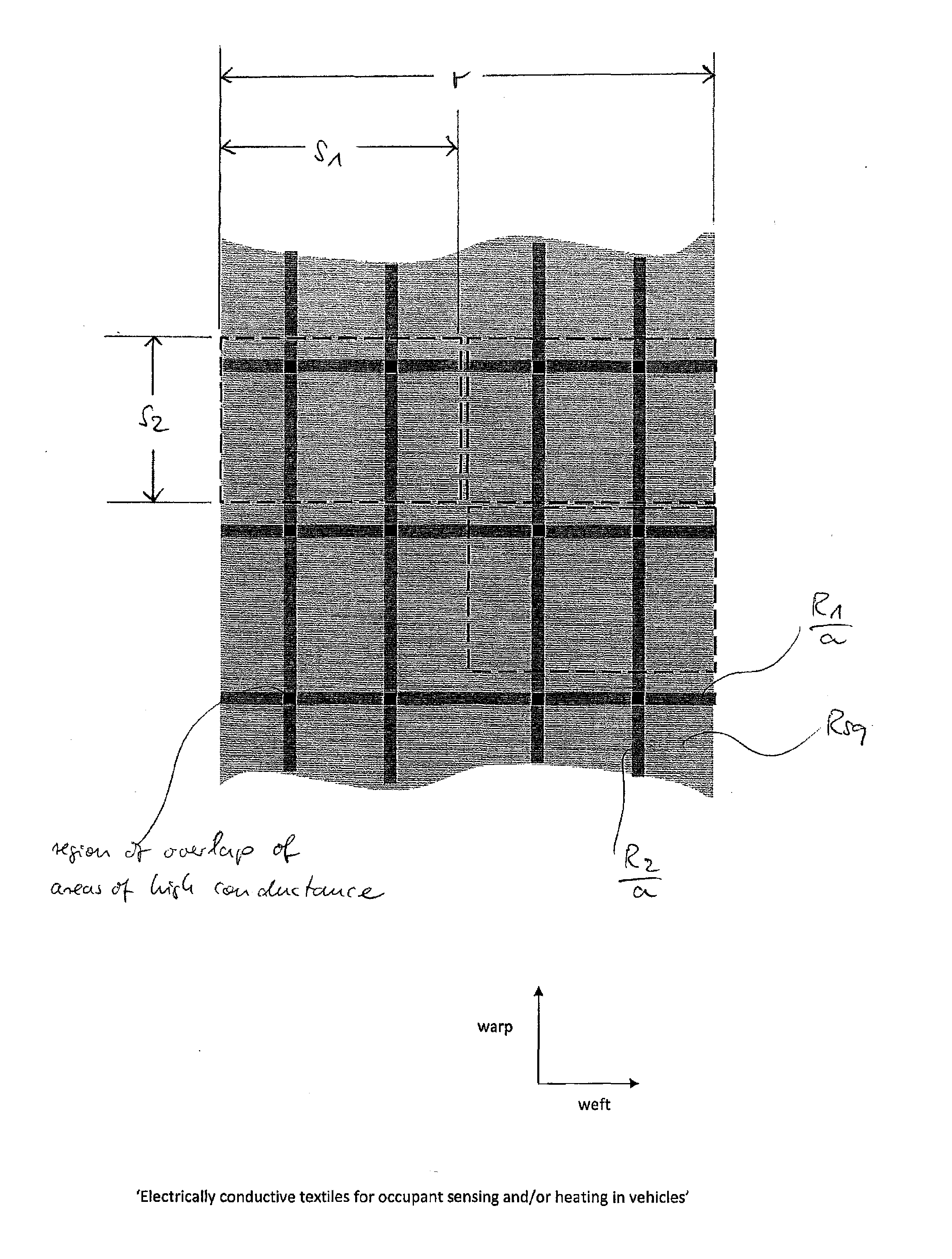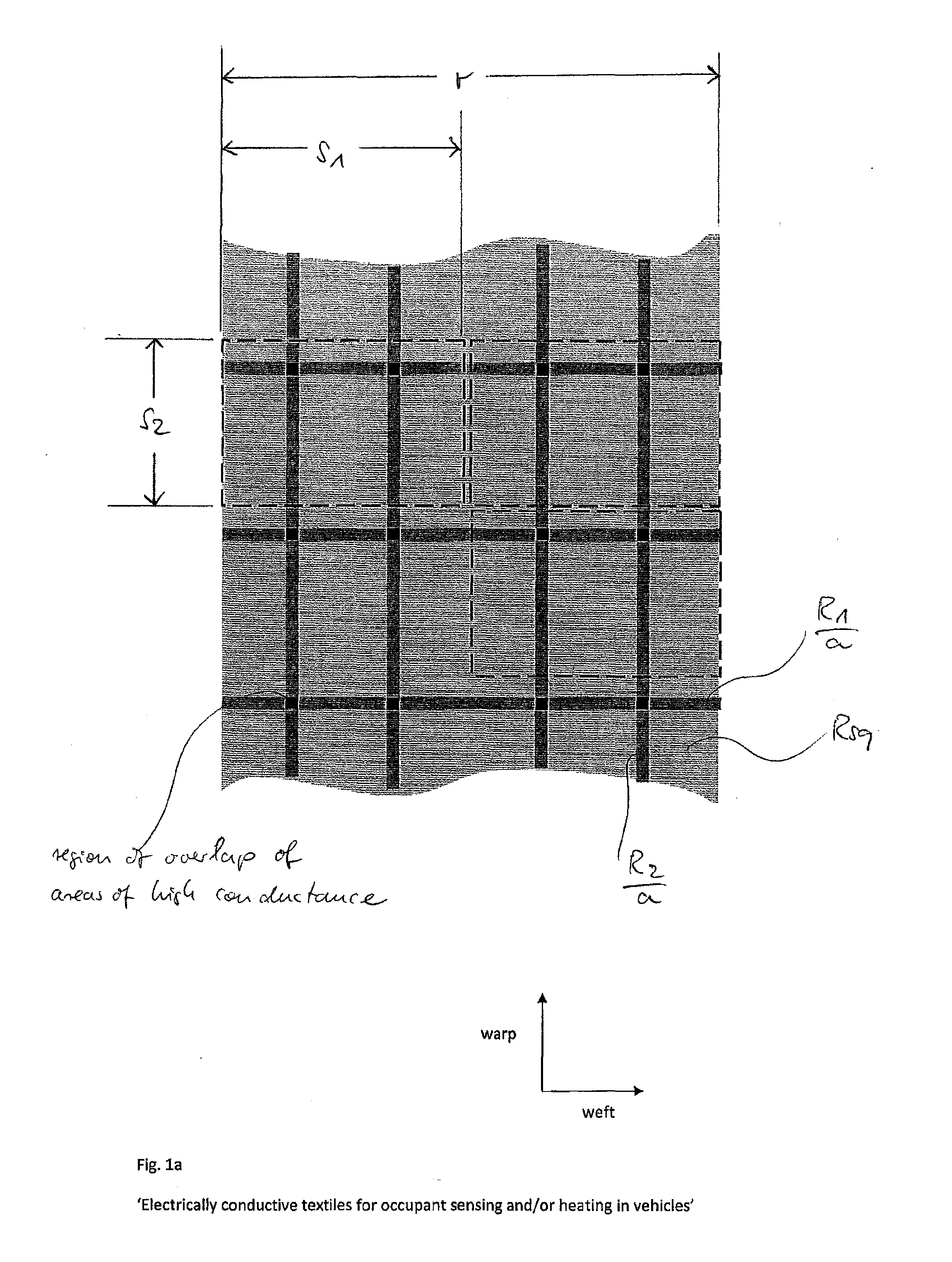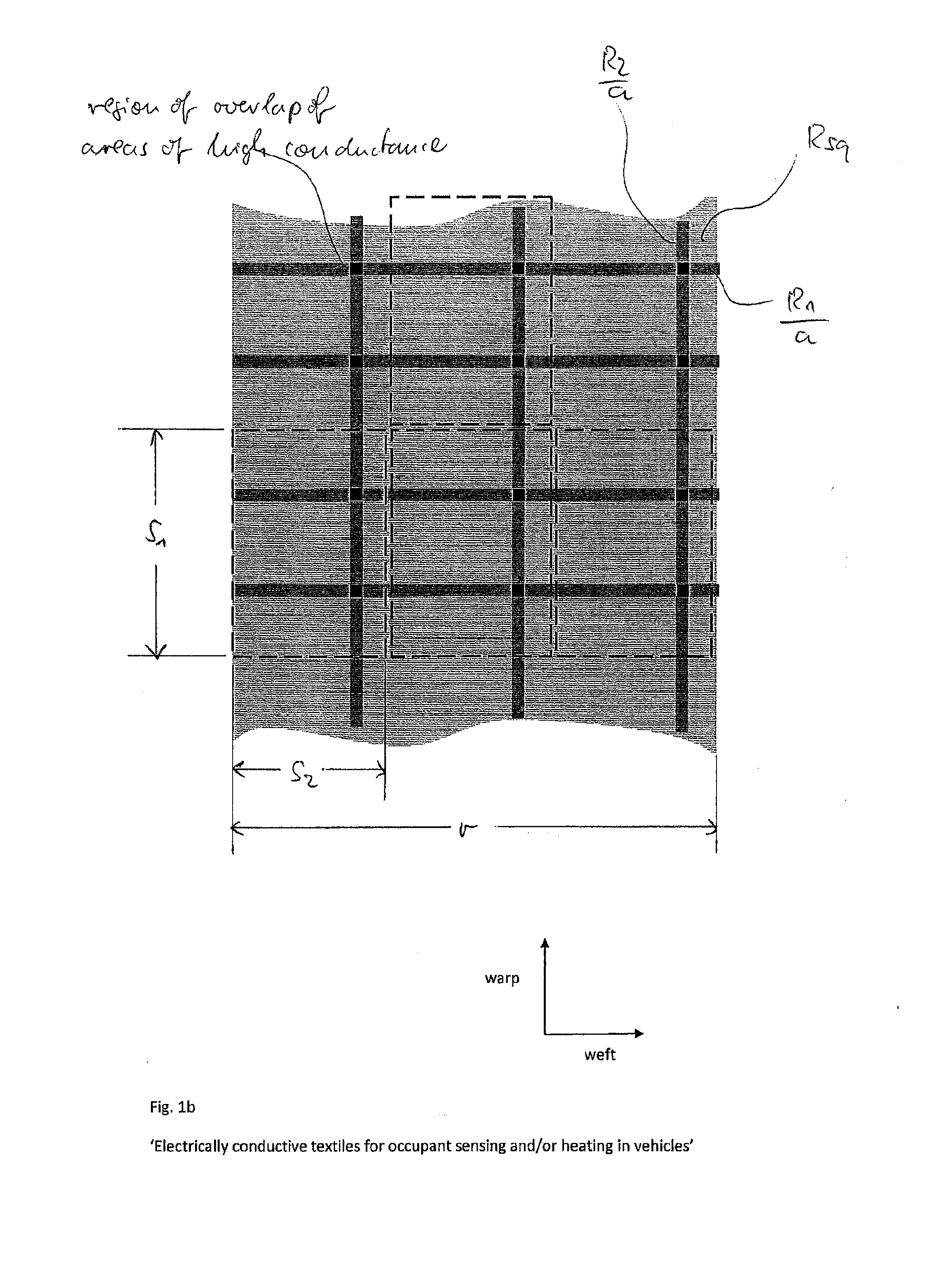Electrically conductive textiles for occupant sensing and/or heating applications
a technology textiles, applied in the field of electric conductive textiles, can solve the problems of affecting the safety of passengers, and the way of producing seat heaters today cannot be transferred to producing textile sensor electrodes, etc., to achieve the maximum of passenger comfort and operational safety, and the effect of inherent robustness
- Summary
- Abstract
- Description
- Claims
- Application Information
AI Technical Summary
Benefits of technology
Problems solved by technology
Method used
Image
Examples
Embodiment Construction
[0026]Textile electrode and / or heating textile are integrated in the vehicle compartment, preferably the sensor and / or heater is attached from the backside to a surface such as driver seat, passenger seat, backseat, steering wheel, door side of compartment, gear shift lever, etc.
[0027]The present invention discloses how to design and produce a textile electrode for an occupant detection or classification system or a heating textile or a textile that exhibits hybrid functionality, i.e. which can be used for sensing and heating.
[0028]All materials used to produce such textile and to provide electrical conductance are characterized by only a small change in their relevant properties if exposed to environmental and mechanical stresses as they occur over vehicle lifetime. So the materials themselves need to be resilient, flexible, and to some extent chemically inert. In particular their electromechanical properties are allowed to vary only in a small range upon application of mechanical ...
PUM
 Login to View More
Login to View More Abstract
Description
Claims
Application Information
 Login to View More
Login to View More - R&D
- Intellectual Property
- Life Sciences
- Materials
- Tech Scout
- Unparalleled Data Quality
- Higher Quality Content
- 60% Fewer Hallucinations
Browse by: Latest US Patents, China's latest patents, Technical Efficacy Thesaurus, Application Domain, Technology Topic, Popular Technical Reports.
© 2025 PatSnap. All rights reserved.Legal|Privacy policy|Modern Slavery Act Transparency Statement|Sitemap|About US| Contact US: help@patsnap.com



